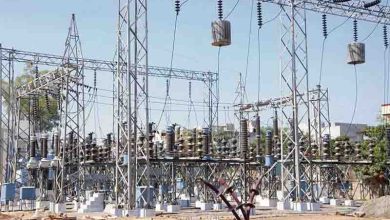China’s PLA enhances the capability of its helicopter fleet
China’s PLA enhances the capability of its helicopter fleet

Beijing, Apr 9 The People’s Liberation Army (PLA) once relied on Russian-manufactured and reverse-engineered European helicopters, but the country’s aerospace industry is now designing and manufacturing a range of indigenous helicopters. The latest platform to emerge is a brand new heavy attack helicopter akin to the American AH-64 Apache.
Taken by Chinese citizens, low-resolution images of the new attack helicopter performing flight testing started circulating on the internet in late March. It is speculated that this secretive new helicopter achieved its maiden flight back in January. Its official name is still uncertain, although many call it the Z-21.
The most remarkable thing about the tentatively named Z-21 is its derivation from the Z-20 utility helicopter.
Andreas Rupprecht, a German expert on Chinese aviation and author of books on PLA aircraft, told ANI, “Now with the first images at hand, it’s almost surprising that we didn’t put together those pieces we’ve known for years. The Z-20 itself is now a mature system. We have seen several prototypes (sometimes referred to as an assault version) with additional sensors and weapons, and so a Z-20-based design – that uses the proven powertrain, transmission, engines and tail arrangement mated to a new slimmer fuselage all makes perfect sense.”
By making use of Z-20 components, China can accelerate the new platform’s development and also reduce risk. Reusing the Z-20’s tail boom, the new Z-21 has a slim, tandem-seat fuselage with wide cheek fairings, just like the Apache does. Like modernized variants of the Z-10, the Z-21’s engine exhausts face upward to reduce the aircraft’s infrared signature and thus improve its chances against surface-to-air missiles.
With WZ10 engines, the new aircraft’s performance relative to the 5.5-tonne Z-10 attack helicopter will be superior. Indeed, one of the Z-10’s main issues is its underpowered WZ9 engines which negatively impact its flight performance, armor protection and payload capacity. Especially in hot and/or high-altitude conditions, the Z-10’s performance is unsatisfactory, something that Pakistan concluded after testing.
With two 1,790kW WZ10 engines, the high-altitude performance of the Z-21 will be boosted, making it better suited for service along the mountainous Indian border. Given that the Z-21 has only just started flying, its entry into service is still some time away.
Some Chinese commentators think it could appear in the PLA within 2-3 years, but Rupprecht told ANI that this is “questionable”. He compared it with the naval version of the Z-20, for instance.
Although it first flew in 2018 and requires fewer modifications than the Z-21, it has not entered service yet. Using this as a comparison, the German expert noted, “In my opinion, something like 5-7 years is very much likely.”
That would put the date around 2029-31. The helicopters epitomize the ongoing modernization of the PLA, something that Chairman Xi Jinping has prioritized since coming to power more than a decade ago.
Over the past 12 or so years, PLA rotary-winged aviation capacity has grown considerably. For example, ten Z-10 helicopters in 2011 had grown to 150 by 2021, and seven Z-8 helicopters had snowballed to 111 in this period.




